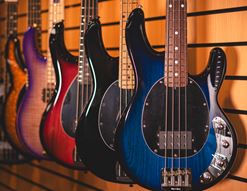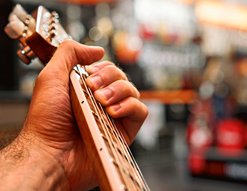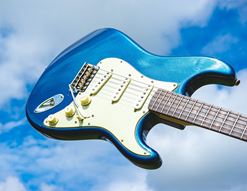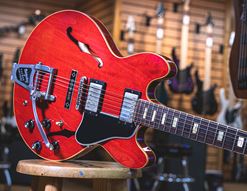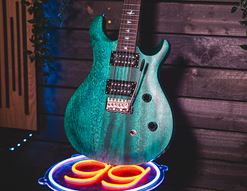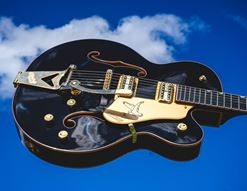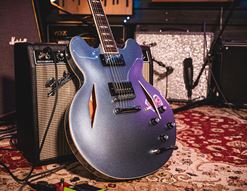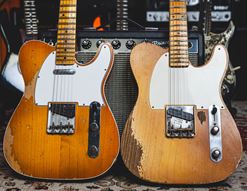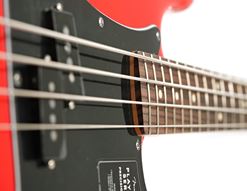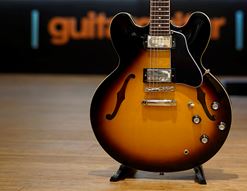The world of effects has changed. In a big way! As processing becomes more powerful, the term ‘compromise’ becomes less and less applicable to the modern guitarist. Breakthroughs in digital modelling and impulse response technology mean that we can all enjoy better sounds - and more of them - for much less money than we’d have to spend even ten years ago.
Today, you can turn up at a venue with a gig bag containing a guitar, a small portable effects unit and a couple of cables, and you’ll be all set! It has taken us guitarists quite a while to get over the disbelief that we’re able to use only a small, inexpensive floor unit for all of our sounds, but in reality, this has been achievable for years now.
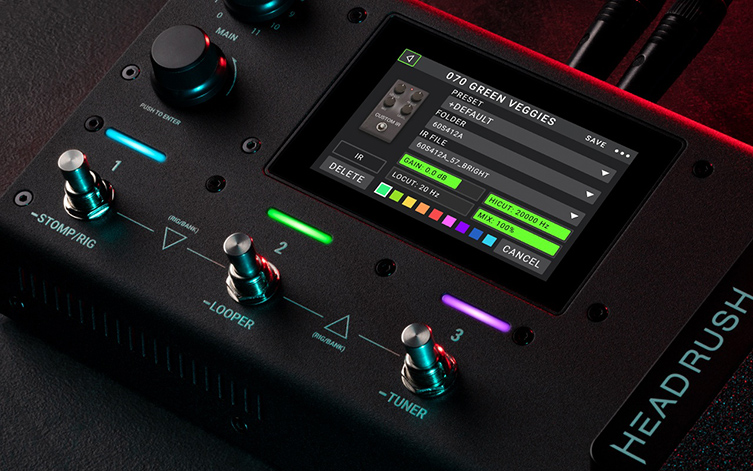
The Top Brands and the Other Brands
Driving this change in technology has been big brands like Kemper, Line 6 and newer companies like Neural DSP. They’ve proven by example that top artists (as in Mark Knopfler and Metallica) can tour with their digital gear, with sounds that meet the expectations of such players.
Now, these units - The Line 6 Helix, Kemper Profiler, Neural DSP Quad Cortex and Fender Tone Master Pro - are at the top of the tree, here. They are the most expensive, accordingly: after all, they are professional grade devices with high production standards and a plethora of inputs and outputs. For those who want the top tier stuff, these are the units to try out and decide upon.
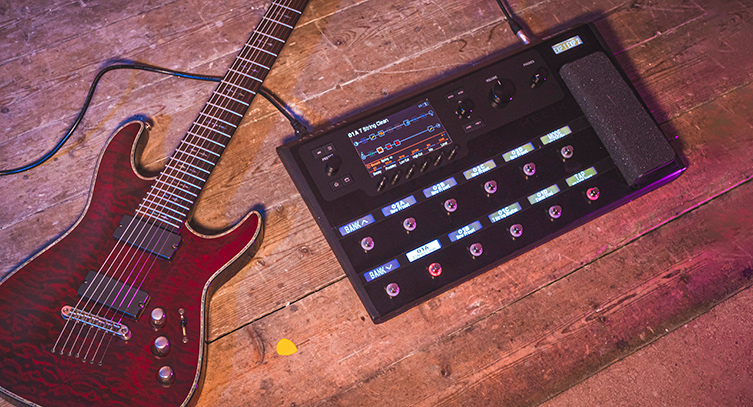
But that’s far from where the story ends. As with all technological devices, the trickle down effect occurs after a few years, so cutting edge developments become available at much lower prices than when they were newly released. In short, you can sound like a million bucks nowadays without having to spend much at all. Whilst the top-end stuff is arguably more nuanced in terms of tonal ‘realism’, I have to say that there often isn’t too much in it! All of the units you’ll read about today sound excellent.
Today’s Aim
Today, I’m going to show you a number of affordable effects units. They are all way below £500 - mostly well, well below that price - and none of them are from the big companies like BOSS/Roland, Line 6 and so on. These are the other companies that exist out there but maybe don’t get the same level of exposure since they are smaller operations. It doesn’t mean they’ll be any less great for you as a gigging or recording player, though, and I want to highlight this today: you don’t necessarily need the dearest gear in order to sound world-class! I’m not comparing these to each other, nor am I putting these against those more expensive processors. I don’t think it’s fair, and don’t really see any great benefit either. What I do aim to do a little bit is to champion the underdogs, and show that these other contenders are equally deserving of your time, your money and your energy.
What Gets Lost in Cheaper Pedals
Before we check out the processors themselves, it may be worth me describing in general terms what you get and what you don’t when you buy a less expensive pedal. Although each brand does things their own way, the market does tend to boil down to certain factors that you can predict and indeed expect. I’m talking about this sort of thing:
- Less footswitches
- Smaller expression pedal or indeed no expression pedal at all
- Fewer output options (for example, you tend not to see XLR outputs and fully-fledged MIDI connectors)
- Simplified control layout
- Fewer options for editing sounds (though you may find integration with a phone app is an option)
- Build quality is not as high a priority
These factors are often a matter of units being made to hit a certain price point, so adjusting your relative budget could get you the features you need whilst still coming in at a fantastic price.
What is worth making clear here is that the actual sounds available in these machines aren’t really in question any more. They all sound very good indeed, and it’s more a question of how you get to those sounds and then edit them that is the real kicker. That’s not to say that some won’t sound better to your ears than others - I certainly feel that one brand is sonically the best here - but my opinion is only that: a matter of taste. It may or may not tally with yours, so it’s worth trying a few of these processors in person to make an informed choice.
So, that said: let’s look at a few of these now then, shall we?
The Contenders
Mooer GE150
First up is this compact, full-of-features unit from Mooer. Mooer are a popular brand for both single effect stompboxes (with some very convincing and specific amp simulations) and processors such as this Mooer GE150. They create affordable stuff but still manage to make it onto the pedalboards of a fair few notable pros.
The layout of this device is something you’ll see a lot of in this market: a compact rectangular footprint with two foot switches and a small treadle expression pedal to the right hand side.
The main vibe here is ease of use and intuitive editing. There’s no touch screen like on other devices I’ll look at today, but I wouldn’t automatically call a touch screen a bonus: it depends if you prefer them over buttons and knobs, which is what you get here.
In addition to the 55 amp models (which use the ‘non linear digital amp modelling technology from the PREAMP series’) and 26 impulse responses (with support for third party IRs), there is an 80 second looper and drum rhythms to use too. Sometimes the lack of footswitches gets in the way of functionality, but that’s true of any small processor with these features. Given what you do get for the price - excellent sounds and a sturdy chassis - I reckon this is a bit of a bargain.
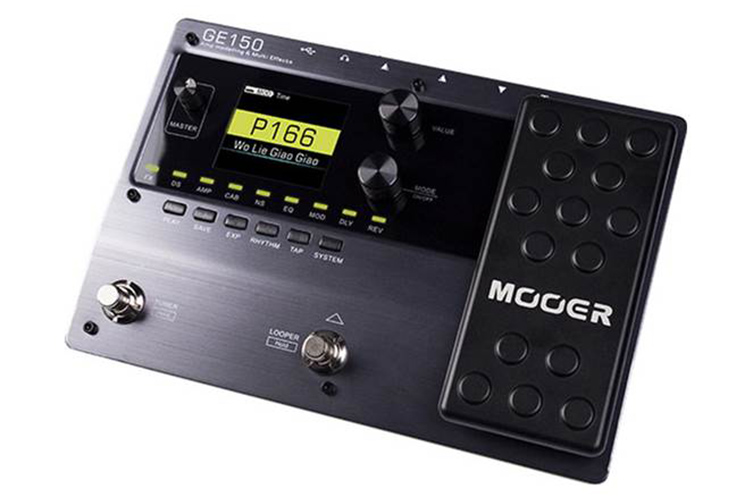
Zoom G2X Four
Zoom have always been the brand that piled on the features and value, and whilst staying in more budget-minded areas of the market, have actually offered up some of the most innovative products and devices around, at any price. Equally well known these days for their handy recorders, Zoom are a brand who have quietly refined and improved their offerings, whilst never using big name artist support to any great degree.
What this means is that Zoom have long since been masters of putting together small, potent boxes of tone, with well thought-out designs and interfaces.
The Zoom G2X Four that I’ve chosen to include in today’s rundown has a very cool innovation right on the front panel. It’s a simple thing they call ‘cross key navigation switches’, and they are basically oversized buttons designed to be smashed mid-gig with a well-aimed boot. It’s four big buttons whose functions change depending on context: they can select patches, operate the looper and so on. It may not sound like much from the description, but in practice this is a highly effective way to navigate your performance.
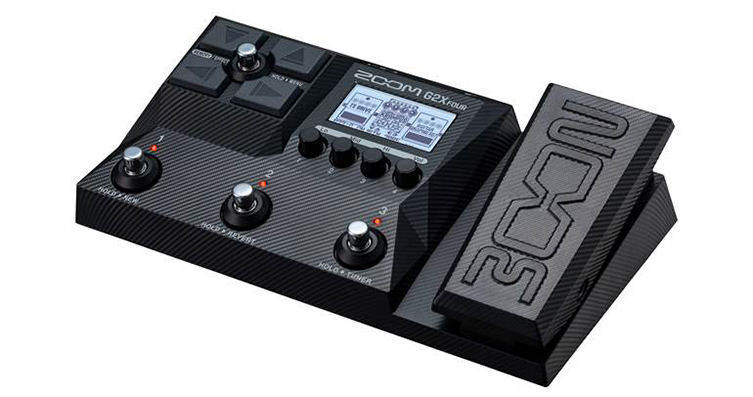
You also get all of the amp modelling and impulse responses that you’d expect from a competitive pedal in 2025. The screen is black and white (I should say rather, light blue and dark blue) but you do get decent graphical representations of stomp boxes and so on, which I think is more than acceptable for the price. The sounds are right, and it’s fun to use, both of which are among the most important elements in my book.
Extra bonus points for how specifically song-related each preset is, too! ‘SexOnFire2008’ is pretty on-the-nose!
NUX Trident
NUX (pronounced ‘New-ex’, pedal fans!) are another Chinese pedal brand who’ve impressed us in recent years. They offer a large roster of effects including a few that are similar in layout to the Mooer that we looked at (check out the NUX MG-400).
Today though, I wanted to include a processor that’s slightly different from those, just to illustrate the diversity that’s available on the market today. The NUX Trident dispenses with the expression pedal in favour of a sort of ‘fly rig’ vibe: 10 footswitches, 18 knobs, 5 switches and 4 buttons help make this unit almost a ‘one function per knob’ situation. There’s loads of real-time control, put it that way!
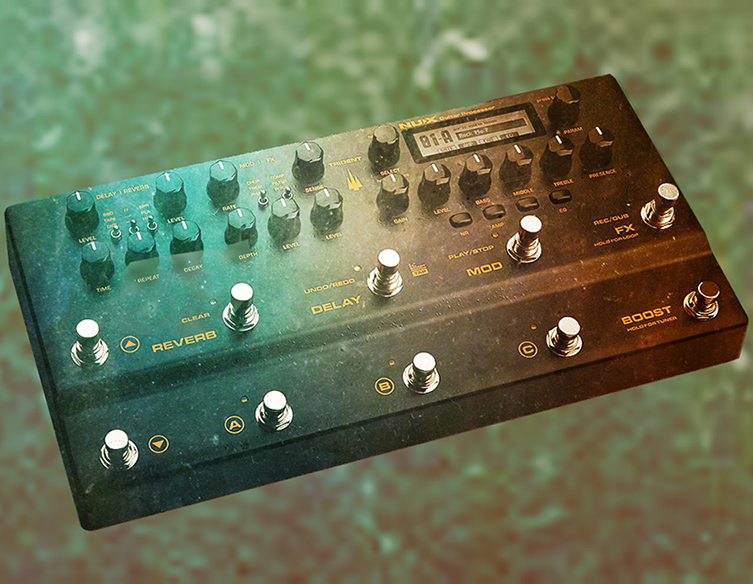
In terms of sounds, NUX include their most up-to-date (at time of writing) TSAC-4K processing for next-level tones. As I mentioned at the beginning, all of these units are up to scratch sonically, but that doesn’t mean that some aren’t more to your taste. This one, for example, has more powerful processing than the NUX MG-400 (which still has High Def audio), for example.
The casing is made from strong metal, so this one is road ready! If you don’t care about navigating menus and prefer a more intuitive experience, then I think you’ll get on well with the NUX Trident.
Hotone Ampero
Hotone (just say ‘hot tone’) have possibly - to my ears at least - the best sounds of all the units on show today. Why? They just have a depth and reactivity that I found convincing, and every-so-slightly more so than the other units. I’m not an endorsee though,and I once again recommend you try a few units to find your perfect match.
Anyway, this Hotone Ampero is one of the brand’s more fully-featured processors. Hotone make a bunch of Ampero models of differing sizes and prices, and I’ve chosen this one since it offers a touchscreen, 4 foot switches and an expression pedal for a price that’s still under £300!
The Ampero is a very stripped back affair: there are not many physical controls here (most of the action takes place on the screen) so there’s less chance of your foot hitting the wrong thing in the heat of battle.
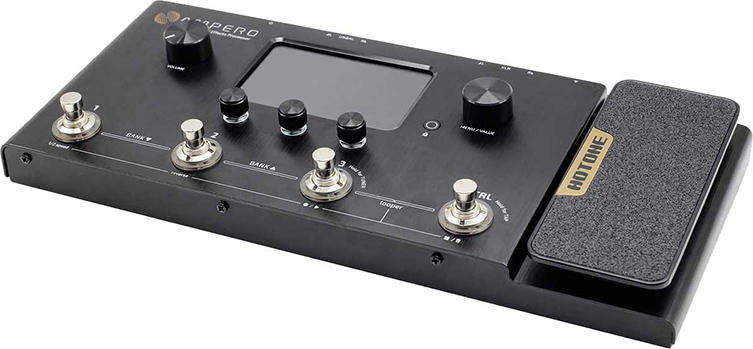
The Hotone Ampero’s proclivity for live use is supported by the pair of XLR outputs, allowing a quality, balanced stereo output for the gigging player. The brand aren’t short of acronyms for their tech, either: the sound modelling system is called CDCM HD (Comprehensive Dynamic Circuit Modeling in High Definition), and their IR tech is called F.I.R.E. (Field Impulse Response Enhancement). Thankfully, it’s not all just hot air and code words: the unit sounds excellent.
Interestingly, Hotone market this as a unit for not only guitar, but bass, keyboards and acoustic guitars. This sounds great, but I’d also add that there’s really nothing stopping you from using any of today’s units with those instruments! Even so, this is a lot of tone and power for the money.
Headrush MX5
Headrush are another brand who offer lots of value for money. Their offerings extend into large boards like the Prime and the Core, but it's the more affordable and portable side of the market that I’m interested in today, so I’m checking out the MX5.
The Headrush MX5 is a 3 footswitch and expression pedal affair, but this one includes a 4” touchscreen for drag & drop editing. This unit, whilst not tiny, is still only 1.6kg and can fit inside a backpack like all of the other units I’ve included today.
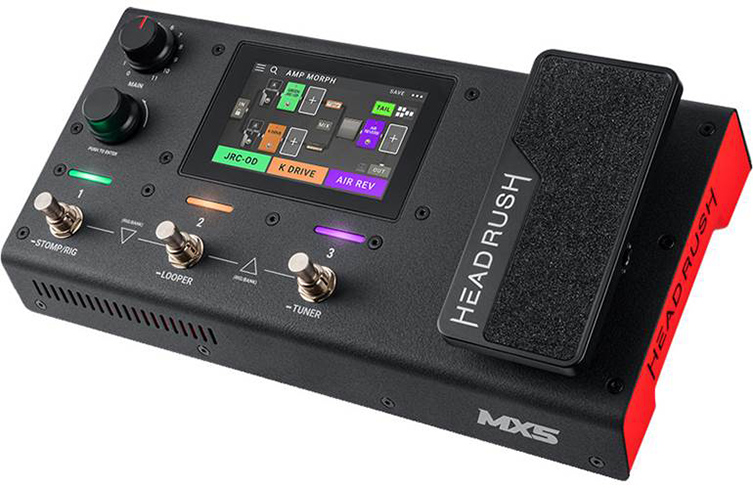
As you might expect, the lion’s share of editing and control happens on that generously sized screen, so the only other controls on the device (apart from footswitches) are two large knobs. Again, you’ll either love this style of interface or you’ll quickly miss physical knobs, so that’s something for each musician to figure out.
This is solidly built, has good ins & outs (including an FX loop and MIDI via minijack) and the presets switch without any audible gaps, which is something I often (wrongly) take for granted these days! It sounds really good and is championed by pro players like Nili Brosh, so that’s a big thumbs up, frankly.
Take Time to Dial in Your Sounds
So that was hopefully a fairly broad skip through the world of affordable effects processors, at least from the point of view of what we have for you. Some of these brands might be unfamiliar to you, but they’ve broken through the market and should be considered worthy of your time and trust.
Just which way you go will depend on many factors, not least the overall design & operation, but I have no doubt that any player reading this blog today will be able to get on well with one or more of these units and sound exceptional doing so. Try a few out if you are in the market - at any price point - and see just how good these more affordable processors are. Gatekeepers are no more! It’s all about sounding good and having a great time. All of these devices will give you that and more.
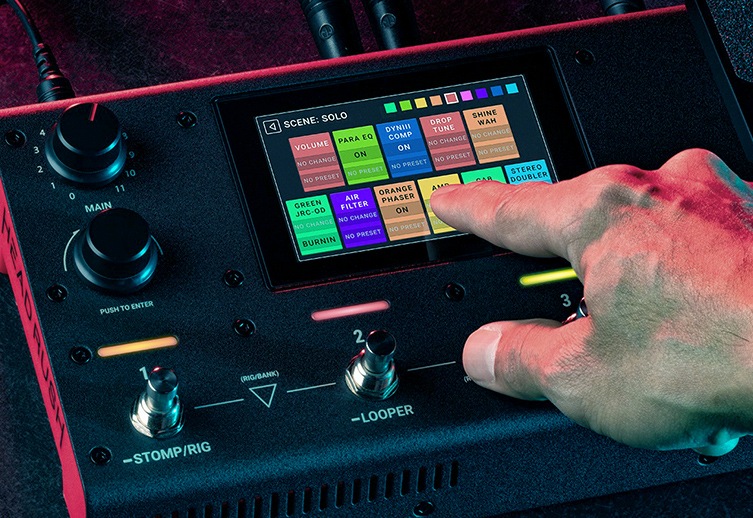
One thing I would say to anyone less experienced in such devices is: take your time to learn the sounds onboard. Sometimes the best ‘Fender Clean’ tone will come from an amp model that isn’t based on such an amp! Take time to really dial in your sounds, using your ears more than your eyes, and you’ll be able to nail the tones you are looking for. With so many options and choices, it can get overwhelming, but even starting from a preset that you like and tweaking it to your preference will make a huge difference.
There’s a great deal of power out there in the lower reaches of the multi-FX market right now, and there is a ton of fun to be had! Enjoy yourself, and try some new sounds!



